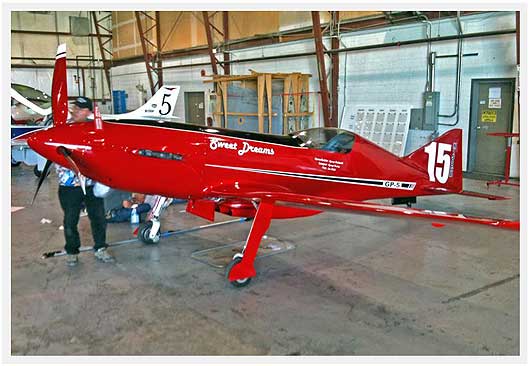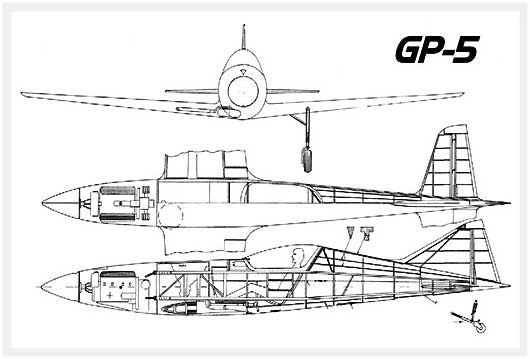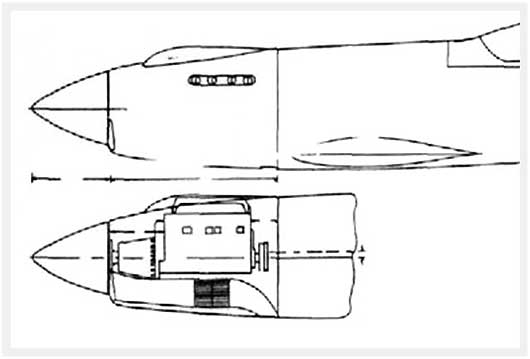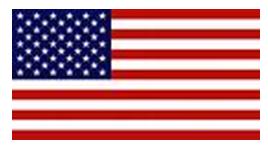GP-5 At Reno 2010: Wooden It Be Great...
 Wednesday, September 15, 2010 at 07:22AM
Wednesday, September 15, 2010 at 07:22AM  (click pic to enlarge) The GP-5 finally comes to Reno (photo: SportClass.com)
(click pic to enlarge) The GP-5 finally comes to Reno (photo: SportClass.com)
The GP-5 is an all-wood racer that was begun in the early 90's by George Pereira, well known for his Osprey and GP-4 homebuilt aircraft. Originally intended to compete against the Unlimited racers (following attempts like Tsunami and the Pond Racer) - but a long and challenging journey ultimately has kept this airplane from ever having a chance to race at Reno. Finally, in 2010, the stars have aligned for the GP-5 to attempt to show the world what it was designed to do... now as a Super Sport class entrant.
I'll have more details to share once I get out to Reno on Friday. What I do know is that originally the GP-5 was being built around an approximate 500 hp Chevy V-8 engine. All of the primary structure was built of wood, and then the fuselage had foam glued on and shaped to get a nice compound curve. The the foam was then covered by a layer of fiberglass. With a wingspan of 22'-2", this sleek beauty was intended to have a gross weight around 1,800 pounds.
 Early design drawings on the Pereira GP-5 racer
Early design drawings on the Pereira GP-5 racer
The drawing above shows the wood structure design as well as the basic concept for engine placement. Projects like this tend to evolve a lot as problems are solved and thinking is changed. The drawing below shows a variation of the engine installation with the V-8 raised slightly (with some cool bumps to make room for the valve covers) and radiators mounted under the engine. The idea at this point was to have an inlet right under the spinner for cooling air. The picture of the actual airplane at top, taken at Reno just a few days ago, shows a scoop more like a P-51 has mounted under the cockpit.
The GP-5 actually went thru several owners before it was ever completed, so there's no doubt a really interesting story that explains how it looks today. I plan to try to get as much info as possible on it and share those details here soon. But for now, I'm just thrilled to know that the GP-5 is at Stead Field and finally getting its chance to give racing a try. Wooden it be great if the GP-5 was a championship racer!
 An early concept for mounting cooling radiators under the engine of the GP-5 racer
An early concept for mounting cooling radiators under the engine of the GP-5 racer
 Martt |
Martt |  4 Comments |
4 Comments | 













































































Reader Comments (4)
It sure would be nice if someone would give credit to the guy that built the first 90% of this plane! Granted, that left another 90% that others built but he put George's vision into shape and the plane was ready for an engine when it moved on.....
Here's a little history for you about the GP-5 from someone who was there in the early years. I don't have all the details, but this will get you started.
The original builder was a guy by the name of Gary Child, a Pitts owner who wanted to race someday at Reno. He built all the wood structure under George Pereira's guidance at his hangar at Davis University airport in Davis, California. Also assisting George with design and engineering advice was Ralph Hallenborg.
Back in the 1980's and 1990's a group of pilots and homebuilders began a routine of flying someplace to lunch every Tuesday, Friday and Saturday from their base at Rio Linda Airport near Sacramento, California. Rio Linda is a privately owned, public use airport. The owner is retired US Air Force pilot Bill Mauser. Unlike most municipal airports, Bill does not place restrictions on what pilots can do in their hangars, so homebuilding flourished at Rio Linda, and homebuilders flocked to the airport. It was not unusual to have planes fly in from around the area on Saturday mornings, the pilots meet in Pereira's hangar to determine the destination of the day, then see a dozen or more aircraft depart in mass off to our destination for lunch – which was usually Nancy's Airport Cafe in Willows, CA. The group, of which I became a proud member while I built my CO-Z III, became known as the Buzzard Squadron, and developed its own patch.
Members of the Buzzard Squadron included George Periera, a B-17 combat veteran of WWII and also a B29 veteran of Korea. He later designed the single place seaplane Osprey I, which became the X-28A when the Navy purchased the prototype to test for possible use in the Viet Nam delta region. But the war ended and it was never put into production. The prototype is in a museum in Kansas. After that George designed and marketed plans for the Osprey II, this time a two seat amphibian. Wanting to go faster, his next design was the GP-4, all wood 240 MPH cross country cruiser. It enjoys the distinction of being the only aircraft to win both the Outstanding New Design and Grand Champion at Oshkosh in 1983 (maybe 1982). Both the prototype GP-4 and Osprey II are in George's hangar at Rio LInda.
I also mentioned Ralph Hallenborg. Ralph flew everything in the Air Force from trainers, to P-51s, B-29s, Ov-10s and the F-104. An aeronautical engineer and test pilot, he is a close friend of George's and has been helpful in designing and engineering various sub assemblies and mechanisms in the GP-5. Ralph also kept a VariEze he built in his hangar at Rio Linda.
Other members of the Buzzard Squadron included veteran Navy pilots who flew combat in the Pacific theater in WWII and over Viet Nam in the 1960s, and a variety of homebuilders, owners of factory built airplanes, airline pilots, etc. During our flights to lunch, we often stopped at Davis airport to check on Gary's progress on the GP-5. I got to see his workmanship up close and can say that it was excellent.
For reasons I never knew, possibly financial, Gary Child gave up the GP-5 project after the airframe was complete and on the gear, with engine installation, instruments, and paint remaining to be done. I had extra space in my hangar, so we stored it there for a year or two in the early 1990s while George looked for someone else to assume ownership of the airplane and resume the project. There the GP-5 sat in the back of my hangar while I completed construction of my CO-Z. The GP-5 looked like it was doing 300 MPH just sitting there, a beautiful airplane! I could have purchased the project for cheap, but I knew that the high cost engine work would be more than I could afford, especially when developing an installation of of an unproven auto engine conversion. I'm not an engine guy.
Eventually, ownership passed on to another man named George, who had the financial resources to complete the project, develop an engine installation, and hire a test pilot - Dave Morse - and fly the airplane. Throughout the process, George Periera remained involved with the project, driving to the airport several times a week to design modifications. Ownership has now pass on to Lee Biehl, and the GP-5 is in Columbia, CA, where it is being re-engined with a new powerplant.
Watch this airplane. The only wood design at Reno. I'm looking forward to Reno 2011!
Brian- Thanx for the detailed info on some of the early years of the GP-5... I appreciate having that great info here!
Fantastic plane, optimal form for a rubber powered scale. Yes, I am building this scale, but I have a problem : lettering on the side fuselage under cokpit. Can you help me with it ?
Lubos